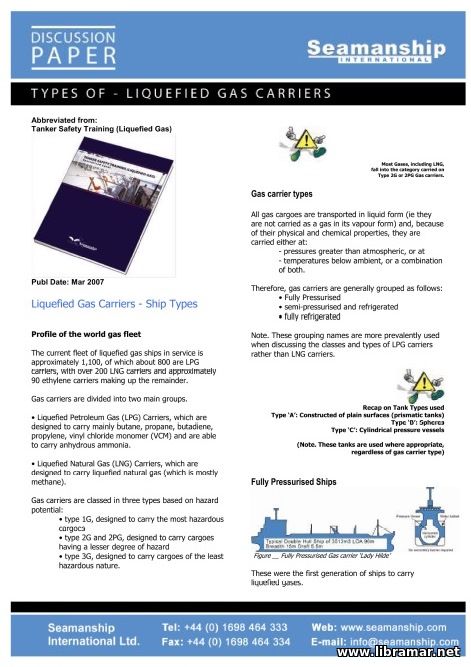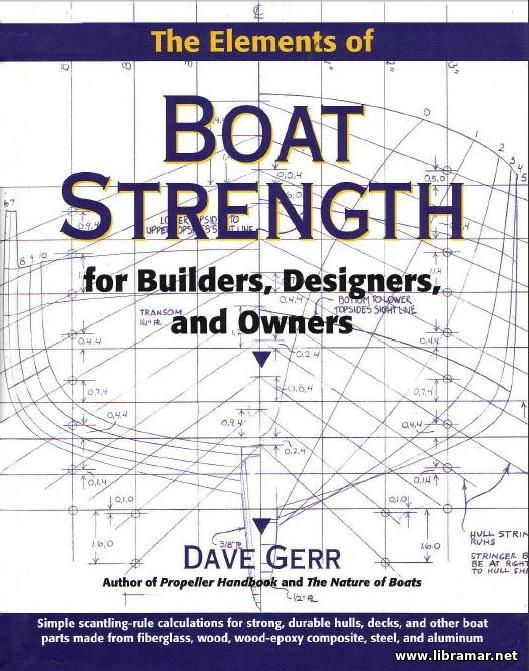Introduction to Lifeboat Arrangements (cont.)
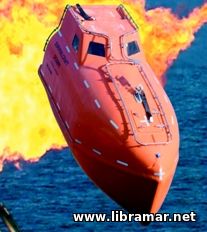
Let us continue to talk about shipboard lifeboat arrangements. Most passenger ships carry partially enclosed lifeboats and the types of release gear are similar to those used for totally enclosed boats. The winch operator lowers the lifeboat to embarkation deck where it must be securely bowsed. The methods used for that can vary very widely so you should consult SOLAS training manual for detailed instructions. Before anybody enters the lifeboat on an exercise drill, you must confirm that the fall preventing devices are in place and have been checked for security.
Only then can the person in charge enter the boat, turn on the main battery and manually disconnect the external power supply. At this point the lifeboat will be swung into the embarkation position and boarding can begin. The passengers will board the lifeboat through the ports and directed to their seats to ensure an even distribution of weight. The first to board will be placed furthest from the entrance. It is the person in charge's role to take command of the evacuees as good leadership is an important factor in survival situations.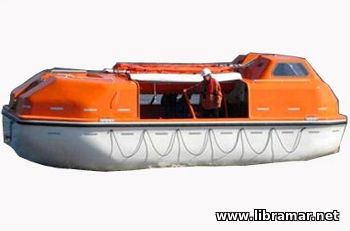
Once the order to launch has been received from the Master, the boat can be lowered. This is done either by a winch operator or from within a boat. It is the responsibility of the person in charge to release the boat after its descent. Few ships are fitted with open type lifeboats but enclosed or partially enclosed boats are far better protected devices from the weather in an emergency.
The other main type of lifeboat fitted on cargo ships is the free-fall lifeboat. This is not lowered from davits but descends directly into the water down the ramp. These boats are prepared for launch by releasing the chocks that secure the boat and disconnecting the external power supply. This will be done by a designated officer who enters the boat and switches its electrical system to battery power. Such craft can descend to a depth of three meters when launched so it is important to check that the landing area is clear of debris or rocks.
Maintenance is important for free-fall lifeboats. The rollers on the ramp must be maintained according to the manufacturer's instructions. You need to take particular care when boarding as you have to cope with the steep angle and restricted space in the boat's interior. It is essential that boarding is carried out in a calm and organized manner. All evacuees should be carrying lifejackets. Some ships carry thinner inflatable lifejackets for use in free-fall lifeboats. As with davit launched boats, the distribution of the occupants weight is crucial. Seats may be allocated in advance. If not, the person in charge will direct crew as required and that person in charge is then last to enter and will seal the door for launch.
Once boarded, you need to strap yourself in; make sure you are familiar with the type of harness used and can identify the right strap for your seat. Some lifeboats are also fitted with head restraints. If your boat doesn't have these, consider wearing your hard hat to minimize any possible head damage on launch. Then, it is time for the pre-launch check. Has the designated person put all emergency equipment such as EPIRB and SART? Is everyone firmly secured in their seat? Have you checked there are no loose tools or other items that can fly around.
The engine is then started. If the motor should fail, the lifeboat can still be used as the speed of its descent will carry it clear off the ship. With the engine running, the propeller should be in neutral; then the release handle is operated and the lifeboat launched. As the lifeboat will enter the water and speed, the rudder is put over to take the boat away from the ship and any object that can damage the boat. Once the lifeboat is in the water, the person in charge should begin to take it clear of the sinking ship. They will have to determine what constitutes the safe distance depending on prevailing conditions and the nature of the emergency. By this time, evacuees should have been issued with anti-seasickness tablets which they must take. Crew must stay strapped in their seats. These boats are self-righting but only if everyone is strapped in. The engines are designed that they will still function even if the lifeboat is rolled over.
Some lifeboats have safety systems that protect them from fire and toxic gases. There is a sprinkler system that operates by pumping sea water on the outside of the boat in the event of fire. It must only be operated with embarkation hatch closed. The sea water enters the system through a suction valve which must be opened. Once the lifeboat is in the water, the water spray pump is driven by the engine. Once the engine is running at full speed, it should be possible to visually check that the water cooling system is working. The system should always be flushed with fresh water after use in the drill. Some lifeboats also have an internal air supply sufficient to get the occupants clear of 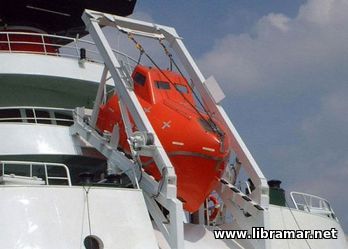 burning oil, toxic gases and smoke. The system is regulated to supply a constant flow of air for around ten minutes.
burning oil, toxic gases and smoke. The system is regulated to supply a constant flow of air for around ten minutes.
Your ship will always be your best lifeboat. Don't leave it unless absolutely necessary and never jump overboard unless there is no alternative. If you do, even under the best conditions, the chances of surviving alone long enough to be found and rescued are very small indeed. Remember that your knowledge of the ship's lifeboat systems and procedures could save you a life and those of crew members and passengers. A well trained crew is more likely to respond to an emergency calmly and quickly. It is the surest way to increase the chance for survival for everybody on board...
The "Read Later" function allows you to add material to this block with just one click. Just click on the icon and read the articles that interest you at any convenient time.
